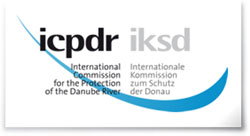| | | | River Currents Newsletter - March 2013 |
|  Thursday, March 7 at 11:30 a.m. EST, the Security and Sustainability Forum will launch its first interview /call-in hour with America's Waterway Founder Anne Lewis. SSF Host Ed Saltzberg will lead a lively discussion about the Mississippi River, its challenges and the ways in which stakeholder input can be harnessed for solutions for the future of the River. Tune in at http://tiny.cc/s24usw and call with questions, too. Thursday, March 7 at 11:30 a.m. EST, the Security and Sustainability Forum will launch its first interview /call-in hour with America's Waterway Founder Anne Lewis. SSF Host Ed Saltzberg will lead a lively discussion about the Mississippi River, its challenges and the ways in which stakeholder input can be harnessed for solutions for the future of the River. Tune in at http://tiny.cc/s24usw and call with questions, too.
| |
 International Commission for the Protection of the Danube River Provides Participation Blueprint International Commission for the Protection of the Danube River Provides Participation Blueprint
At the very end of last year, the International Commission for the Protection of the Danube River (ICPDR) produced a blueprint for public participation in the planning for the second Danube River Basin Management Plan (DRBMP). The ICPDR was formed in 1998 to promote policy agreements and to set joint priorities and strategies for improving the state of the Danube River and its tributaries. It's made up of 14 countries and the European Union. In December, ICPDR's Water Framework Directive's Article 14 called for a second plan to be completed in 2015, with a stakeholder workshop in 2014.
This step by ICPDR seems to follow the World Wildlife Fund's Seven Keys to Integrated River Basin Management. Years ago, the WWF defined Integrated River Basin Management as "the process of coordinating conservation, management and development of water, land and resources across sectors within a given river basin, to maximize economic and social benefits derived from water…" One of the seven keys is, "Active participation by all relevant stakeholders in well-informed and transparent planning and decision-making."
If the ICPDR can call for broad stakeholder participation in its planning inclusive of 14 countries, shouldn't we consider the same in the U.S. for the Mississippi River?
Taking a Look at the Way the Dutch Do It
Apparently Gov. Andrew Cuomo of New York has looked to Europe, as well, and likes the way the Dutch do floodplain management. While New York is not Rotterdam, the Netherlands has successfully held back the sea for centuries. In a future that seems destined to include greater weather extremes, New York is taking a look at the way water is managed in a place like the Netherlands.
A New York Times article points out that citizens of the Netherlands are no more fond of top-down decision making than Americans. But a specific example of an affected farming community in a southeast province holds lessons for Mississippi River plans. Potentially displaced farmers organized, instead of suing, and came up with ways dikes could be constructed so farming could continue on top of them. "The lesson is," one of the farmers says, "these things are not easy but they work out if there is cooperation and participation."
We can do the same for the Mississippi River through a National Dialogue for the Future of America's Waterway, only we can do it in advance and not wait for a costly, climate crisis.
Now There's an App for River Monitoring
Technology may be enhancing yet another citizen engagement function for rivers. Citizen scientists can now use cell phones to monitor mercury readings in lakes and rivers. Developed by scientists in Spain, a sheet placed in a body of water can be photographed by phone and transmitted through the app for mercury content amounts. More information at: http://tiny.cc/9yhysw | | | For more information please email:

www.americaswaterway.org | Find Us on Facebook
 |  |  | | Unsubscribe me from this contact list | | |